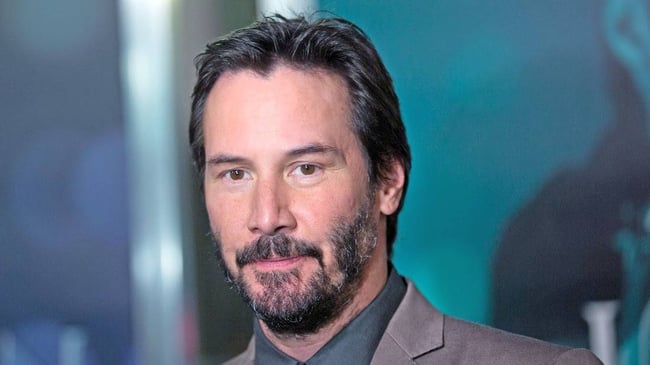

Why are some beards more patchy than others?
Photos Getty Images
Words Camille Claudet
Share the article on
Going through a rough patch? We got you.
You have bald spots in your beard, and you can’t help but wonder why the beard gods have punished you so? Fret not, these gaps can be filled in. Before you shave it all off to spite your face, read on to understand where these patches come from and how to fix them.
How does hair grow?
Here’s a quick introduction to the basics of hair growth. Your hair begins growing from a root in the bottom of the follicle. Its growth is then divided into three stages. The first one — called the anagen phase — is the stage when the hair breaches the skin. The second step — the catagen phase — covers the period during which the hair grows and ages. The final phase — also known as telogen phase — is when the hair dies and is replaced. This cycle then repeats.
Your beard patches aren’t necessarily due to a lack of hair follicles in those specific areas. It’s quite possible that the follicles simply aren’t active.
The quantity of hair follicles you have also depends on your genetic makeup. Taking a look at the beards of other men in your family should give you a better understanding of your hair growth. This is by no means an exact science, though. We each have our own beard specificities and growth cycles. Hair growth will also vary depending on your age and the testosterone level in your body.
What role do diseases play?
Patchy beard growth can sometimes be linked to a skin disease. The most common of these diseases is spot baldness. It is generally not too serious, and often related to stress, medication you might be taking, or even untreated tooth ailments. Spot baldness is a chronic inflammatory reaction leading to hair growth completely stopping in specific areas on the face. This anomaly can last several months between the telogen phase and the following anagen one. This prevents the hair from growing back as it should, and you’re left with patches.
Bald spots in your beard around scars are perfectly normal and even have a name: scarring alopecia. This form of baldness is caused by traumatic incidents such as cuts and burns. These incidents destroy the hair follicles, preventing any further hair from growing. The only option you have left is to tell the incredible story of how these scars came to be. We won’t judge you if you feel the need to invent something more exciting than the truth.
There is also a hair follicle inflammation called folliculitis. It is caused by a bacterial infection — like dermatophytosis — related to specific skin fungus. Your pharmacist should have a light treatment which will take care of this issue in a matter of weeks.
The least common of hair growth-related diseases is trichotillomania. People who suffer from this disease — also known as trich — cannot resist the urge to pull out their hair. Unfortunately, people with trich are well aware of the reason for their patches.
Any miracle solutions?
Not really. However, a good diet, hygiene, and active lifestyle are a good place to start. Eating well, staying hydrated, getting enough sleep, and exercising regularly will take you a long way in ensuring your beard is healthy and patch-free. A balanced diet will provide your beard with the vitamins, minerals, and protein it needs. Exercise will increase your body’s testosterone levels, which helps decrease hair loss.
Another natural means of fixing beard patches is exfoliation. Exfoliate the hairless area to remove any dead skin cells that could clog the follicle and thereby clear the way for the hair to grow.
Follow this exfoliation by moisturising your beard and skin. You can do this using castor oil, which will foster growth and stimulate the hair follicles. Beard hair moisturised with castor oil is thicker and softer, and as result your beard will look more consistent and disciplined. The moisturising in itself is pretty straightforward. Massage your beard and its patches with castor oil — or a beard oil which has some as an ingredient, such as the Horace one — on a daily basis. This new ritual will also boost microcirculation and improve blood flow to the hair roots.
How about just covering the patches?
Depending on the length of your beard you can quite easily camouflage patches. If your beard is long enough, brush it. The areas where your beard is thicker will then cover any not-so-dense zones.
Pay close attention to your beard growth. This will help you find the beard style best suited to cover any patches. Let your beard grow out to fill in any bald areas or even it out to make them less noticeable.
Fixing beard patches can be reasonably easy. If none of the aforementioned techniques work for you, maybe it’s just not meant to be. Own your beard, however patchy it may be!